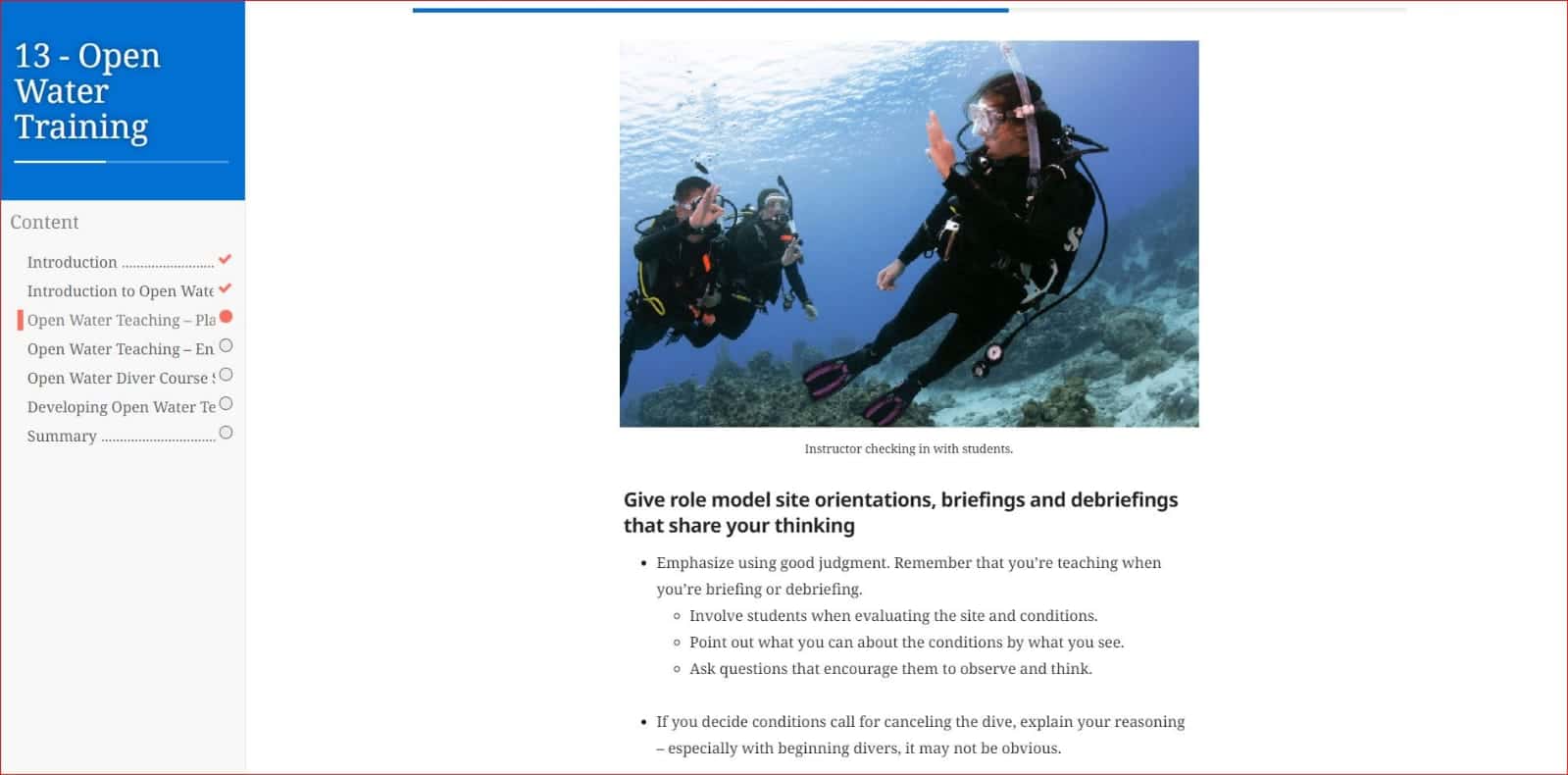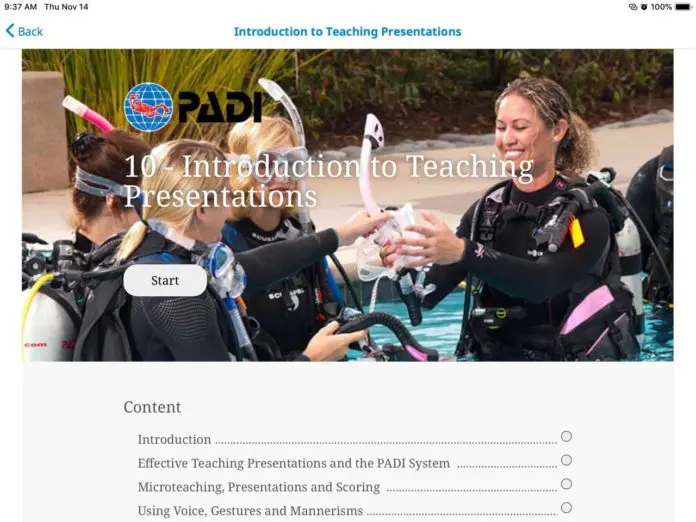On the heels of the new conservation-focused campaign that dropped at the PADI Social Wednesday night, DeeperBlue.com had the opportunity to sit down with PADI Technical Development Executive Karl Shreeves and Manager of Instructor Development Alan Jan to discuss the other big new development they’re unveiling this week: the shiny new revised version of the PADI Instructor Development Course.
Since its inception, PADI has placed a high value on continuing to improve its training materials and methods, utilizing new developments in instructional technology to stay at the cutting edge of effective dive education. In 1985, they made the decision to separate their instructor training (IDC) from the final evaluation (IE) so that Course Directors and IDC staff could focus intensively on developing capable, knowledgeable Open Water instructors and then evaluate their qualifications in an impartial process.
Today, they are ready to present the results of a two-and-a-half year effort to refine the process once again, incorporating feedback from dozens of PADI Course Directors all over the world about what works and what doesn’t, and conducting two extensive field trials on the new materials and methods.
With the advent and improvement of their eLearning tools, PADI wanted to modify the IDC process to emphasize the hands-on aspect of instructor development, focusing on using course director/instructor candidate time for in-water training to set their pros up for success. The move to interactive online learning has given PADI students at every level the ability to work through the material at their own pace, when and where it was most convenient for them.
It hasn’t been a bug-free process, though, especially with the use of streaming in locations with less-than-reliable internet connections. PADI has solved the issue by offering streaming eLearning with the option of pre-downloading materials. It’s also platform-agile, which means it will perform with equal facility no matter what type of device you’re using to access it. Study from your laptop, your tablet, even your mobile phone — it really is available anytime, anywhere.
The new IDC strategies have refined not only what is taught, but how — with an ethos of “thinking like an instructor.” Course directors and instructor trainers are encouraged to treat IDC students as instructors, rather than simply candidates. The focus is on development and improvement, not instant perfection.
The new IDC training debuted Tuesday November 12th, with over 300 PADI Course Directors in attendance to learn about the new attitudes and techniques, as well as to get a look at the revised materials their IDC students will receive going forward. Shreeves remarked that course directors are a demanding bunch with high expectations, but PADI treasures that quality, as it forces them to rise to meet the challenges. And by all accounts, the eight hours of retraining offered early this week were met with great feedback.
Additional questions and concerns are inevitable with any new programming, and PADI is committed to being immediately accessible as the new IDCs begin to roll out. They expect 200+ IDC staff on Friday, November 15th for their opportunity at retraining.

The updated IDC Crew Pack will still be available at the same price point, and is hitting the market in 14 languages, with more expected next year. The translations are done by real native speakers of the languages who are actually divers themselves, rather than translation software that has trouble accurately converting dive terminology. Like apps that update as new versions and fixes become available, PADI eLearning materials will be a perpetually-accessible work-in-progress, so the information students learn will always be as up-to-date and accurate as possible.
As the global market for diving continues to grow, PADI is hoping their improved training materials and techniques combined with their worldwide name-recognition and quality service will help them achieve their goal of recruiting a billion torchbearers to protect and conserve the world’s oceans. As Alan and Karl told us, the average PADI Course Director influences a thousand people a year. If each of those thousand goes on to spread the message of ocean protection, the resulting groundswell makes that billion-person goal seem well within their reach.
To get in on PADI’s initiative, plan your next adventure, or to sign up for your next class, visit PADI.com today.

